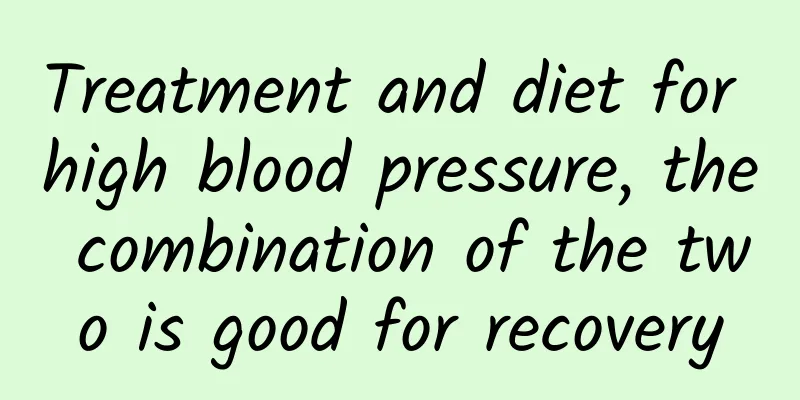Treatment and diet for high blood pressure, the combination of the two is good for recovery

|
Nowadays, more and more people suffer from high blood pressure, and they are getting younger and younger. If high blood pressure can be treated scientifically in time, the deterioration of the disease can be well controlled, especially if daily treatment and diet are well combined. 1. General treatment Pay attention to the combination of work and rest, maintain adequate sleep, and participate in work, physical labor and physical exercise within your ability. Pay attention to dietary adjustment, adopt a low-salt, low-animal fat diet, and avoid foods rich in cholesterol. Obese people should properly control their food intake and total calories, lose weight appropriately, and not smoke. Taking a small amount of sedatives can relieve mental tension and some symptoms. Options include: diazepam, potassium bromide, phenobarbital, chlordiazepoxide, etc. 2. Antihypertensive drug treatment Rationally using antihypertensive drugs according to the condition of the disease can keep blood pressure at normal or near normal levels, which is effective in alleviating symptoms, delaying disease progression, and preventing complications such as cerebrovascular accidents, heart failure, and renal failure. There are many types of antihypertensive drugs, each with its own characteristics. Currently, there is a trend towards long-acting preparations or dosage forms with lasting effects and reduced frequency of administration to make it more convenient for patients to take them. 3. Eating habits that hypertensive patients should pay attention to 1. First of all, we must control energy intake. It is recommended to eat complex carbohydrates, such as starch and corn, and eat less glucose, fructose and sucrose. These sugars are monosaccharides and can easily cause increased blood lipids. 2. Limit fat intake. When cooking, choose vegetable oil and eat more marine fish. Marine fish contains unsaturated fatty acids, which can oxidize cholesterol, thereby lowering plasma cholesterol. It can also prolong platelet aggregation, inhibit thrombosis, and prevent stroke. It also contains more linoleic acid, which has a certain effect on increasing the elasticity of microvessels, preventing blood vessel rupture, and preventing complications of hypertension. 3. Consume protein in moderation. The ideal daily protein intake for patients with hypertension is 1g per kilogram of body weight. Eating fish protein 2-3 times a week can improve vascular elasticity and permeability, increase urinary sodium excretion, and thus lower blood pressure. If hypertension is accompanied by renal insufficiency, protein intake should be limited. 4. Eat more foods rich in potassium and calcium and low in sodium, such as potatoes, eggplants, kelp, and lettuce. Foods high in calcium: milk, yogurt, and dried shrimps. Eat less broth, because the increased nitrogen extract in broth can promote the increase of uric acid in the body and increase the burden on the heart, liver, and kidneys. |
<<: Symptoms of dermatitis and eczema, distinguishing between acute and chronic
Recommend
What is neurosis?
Although everyone seems to be familiar with the d...
How to regulate Yin deficiency and Yang hyperactivity with food
Many people's physical constitution cannot ke...
The benefits of eating Panax notoginseng
Panax notoginseng is a substance that plays many ...
Causes and treatments of thigh muscle atrophy
Thigh muscle atrophy refers to the symptom that t...
Can black wolfberry be consumed with honey?
Black wolfberry, literally means black wolfberry....
Women always feel the urge to urinate in their urethra
Urinary tract infection is a common disease cause...
How to remove surgical scars
Nowadays, all surgeries are minimally invasive an...
What are lymph nodes?
Lymph nodes are the most important immune organs ...
Can taking diarrhea medicine help you lose weight?
Can diarrhea help me lose weight? The answer is ye...
What to do with the pits left by chickenpox
Chickenpox occurs frequently in our daily life no...
Fig enzyme efficacy and function
The nutrients rich in fruits provide great help t...
What are the traditional Chinese medicines for nourishing the lungs?
The lungs are very important in our body. If the ...
How to cure herpes on mouth quickly?
Herpes on the mouth is a condition that many peop...
Two types of photochrome
Photochrome is an element present in plants, gene...
What are the symptoms of a rash in children?
Children are prone to some skin diseases during t...









